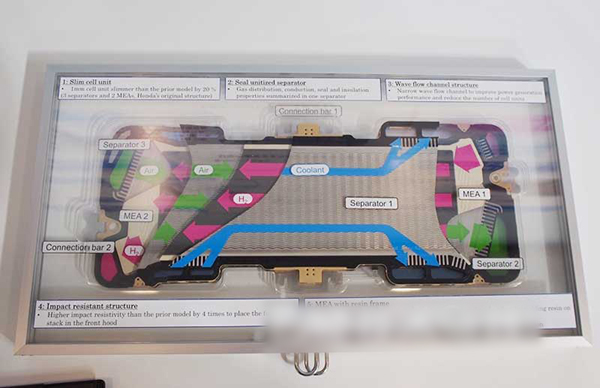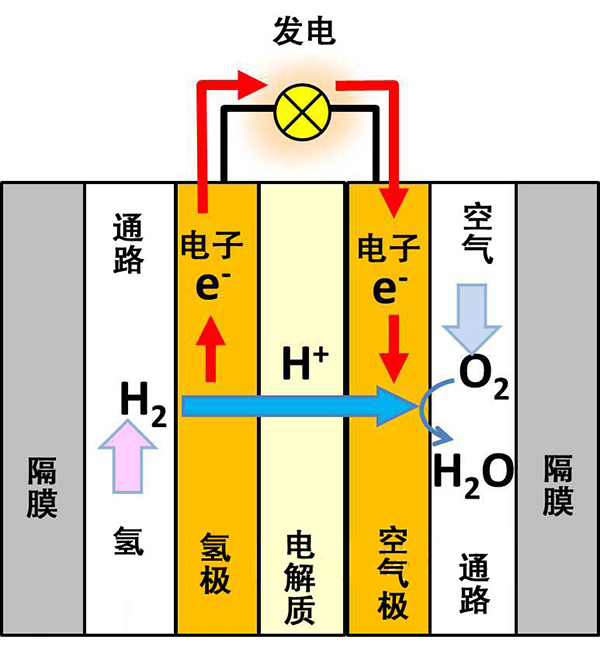The fuel cell unit used by Honda’s new fuel cell vehicle (FCV) “CLARITY FUEL CELL†has increased the output power density by 50% and reduced the volume by 20% by increasing the reaction efficiency (Fig. 1). In the past, the water generated in the chemical reaction sometimes blocked the flow path of hydrogen and air. This time, by circulating the generated water inside the battery, the passages are prevented from being clogged, thereby improving the reaction efficiency.

Figure 1: The appearance of the fuel cell unit used by Honda's "CLARITY FUEL CELL" (click to enlarge)
The fuel cell unit consists of a "hydrogen electrode" that passes hydrogen, a "air electrode" that reacts with hydrogen in the air, and an "electrolyte" that is located between the two electrodes (Figure 2). The hydrogen in the hydrogen electrode reacts with oxygen in the air electrode through the electrolyte to generate electricity.

Figure 2: A diagram of a fuel cell unit. The battery unit consists of a central "electrolyte" and "hydrogen poles" and "air poles" on both sides. Hydrogen ions are released from the hydrogen electrode, move through the electrolyte to the air electrode, react with oxygen to generate electricity, and generate water.
In order to increase the reaction efficiency, the inside of the battery cell must maintain a constant humidity. However, the water generated by the previous reaction accumulates in the downstream of the passage, blocking the air flow passage and hindering the reaction (Fig. 3). To make the water not clog the path, the path is designed to be deep, which will make the battery large.

Figure 3: Mechanism to prevent water from plugging the pathway. The original battery cell flows hydrogen and air in the same direction. The water generated by the chemical reaction accumulates in the downstream of the passage and easily blocks the passage. This time, the battery cell can make the generated water circulate through the electrolyte by making the flow direction of hydrogen and air reversed. (Click to enlarge)
This time, by improving the flow of hydrogen and air, the generated water is circulated within the battery cell, preventing the passage from being blocked. Recycling the water in the battery cell allows the humidity to be uniform and also inhibits the passage blockage. This not only improves the reaction efficiency, but also allows the design of the passageway to be very shallow, contributing to the miniaturization of the battery cell. (Reporter: Sato Masaki)
Exit Sign,Exit Light,Exit Signage,Exit Sign With Lights
NINGBO JIMING ELECTRIC APPLIANCE CO., LTD. , https://www.feituosafety.com
